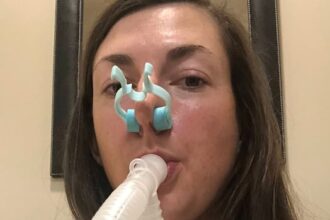In a cramped examination room in Halifax, 27-year-old Melissa Dorian clutched her medical file—eight years thick with dismissed symptoms, misdiagnoses, and medical gaslighting. Her journey to a Polycystic Ovary Syndrome (PCOS) diagnosis reveals a troubling pattern within Canada’s healthcare system: women’s health concerns systematically minimized, their pain normalized, and their bodies misunderstood.
“I was told it was stress, that I should lose weight, that irregular periods were normal,” Dorian told CO24 News during an interview at her Halifax apartment. “I knew something was wrong with my body, but no one would listen. It took eight doctors and nearly a decade of my life to get answers.”
PCOS affects approximately 10% of women of reproductive age in Canada, making it one of the most common endocrine disorders. Yet despite its prevalence, diagnosis takes an average of two to three years—and for women like Dorian, the timeline stretches much longer.
Dr. Eliza Thornton, an endocrinologist at Women’s College Hospital in Toronto, explains the diagnostic challenge. “PCOS presents differently in each patient. Some have irregular periods, others struggle with weight, acne, or excess hair growth. Without comprehensive screening protocols in place across Canada, it’s often missed or misdiagnosed as other conditions.”
The financial impact compounds the physical and emotional toll. A recent study by the Canadian Institute for Health Information found that women with undiagnosed PCOS visit healthcare providers 3.5 times more frequently than the general population, incurring approximately $4,200 in additional annual healthcare costs while seeking answers.
“I spent thousands on private testing, nutritionists, and supplements trying to feel better,” Dorian said. “I couldn’t work full-time because of my symptoms. The economic impact of delayed diagnosis is devastating.”
The geographical disparities in women’s healthcare access further exacerbate the problem. In rural Nova Scotia, where Dorian initially sought care, specialized gynecological services are limited. According to Health Canada statistics, patients in some Maritime communities wait up to 18 months for gynecological referrals, compared to the national target of three months.
For racialized and Indigenous women, the barriers multiply. Research published in the Canadian Medical Association Journal shows that Indigenous women wait 40% longer for gynecological referrals and are 60% less likely to receive comprehensive hormone testing when presenting with PCOS symptoms.
“This is a systemic failure,” says Dr. Amrita Sandhu, reproductive endocrinologist at the University of British Columbia. “Medical education still treats the male body as the default, with women’s health often relegated to reproductive concerns only. PCOS affects metabolism, cardiovascular health, mental health—it’s a whole-body condition that requires whole-system solutions.”
Patient advocacy groups across Canada are pushing for change. The Canadian PCOS Society, with 15,000 members nationwide, has proposed a comprehensive action plan to Health Canada, including mandatory PCOS screening protocols in primary care, increased funding for women’s health research, and improved medical education on hormonal disorders.
Health Minister Mark Holland acknowledged the concerns in a statement to CO24, noting that “women’s health equity remains a priority” and that the ministry is “exploring options to improve diagnostic pathways for complex endocrine disorders.”
For Dorian, who finally received proper treatment after her diagnosis, the focus is on ensuring other women don’t lose years of their lives to medical dismissal. She now runs a support group for women with PCOS in Halifax and advocates for policy changes at the provincial level.
“The most devastating part wasn’t the diagnosis—it was being told repeatedly that my suffering wasn’t real,” Dorian reflected. “No Canadian should have their health concerns dismissed because of their gender.”
As Canada grapples with healthcare reform post-pandemic, the question remains: how many more women must navigate this diagnostic wilderness before women’s health concerns receive the same medical attention, research funding, and clinical urgency as conditions that primarily affect men?










